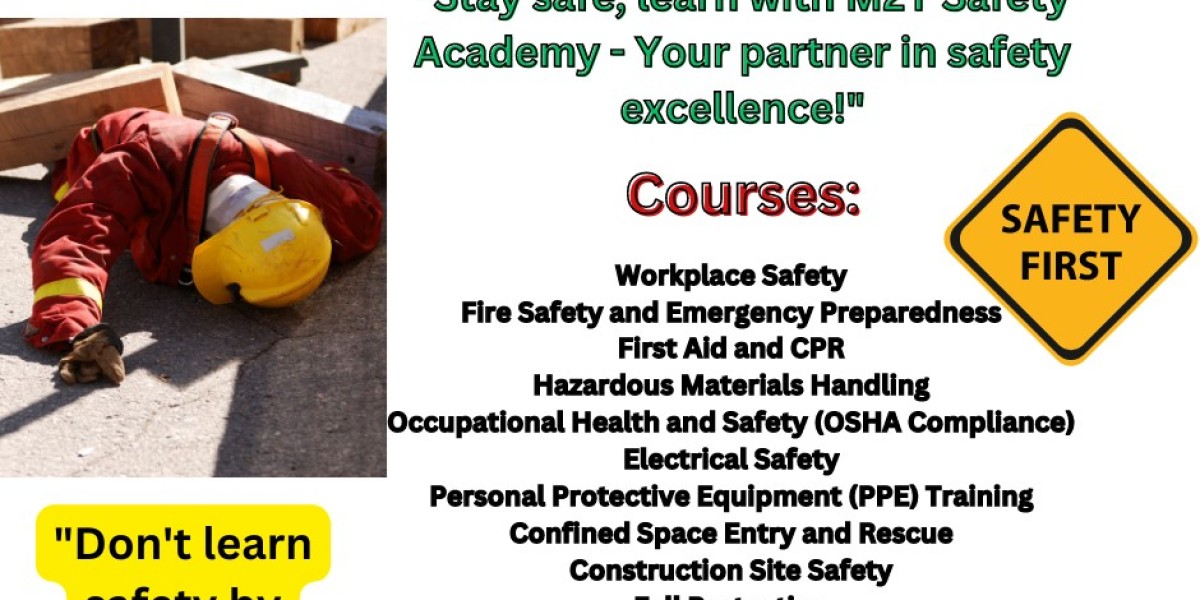Fire safety and risk management are integral components of ensuring the well-being and security of individuals and properties. Fire, a powerful force, can have devastating consequences if not properly managed. This necessitates the implementation of comprehensive fire safety measures and a robust risk management framework. This essay explores the key concepts, strategies, and practices in fire safety and risk management highlighting their importance in various settings.
I. Understanding Fire and Its Hazards:
Nature of Fire: Fire is a chemical reaction involving the rapid oxidation of a combustible material, accompanied by the release of heat and light. Understanding the fundamental principles of fire formation is crucial in developing effective fire safety measures.
Fire Triangle: The fire triangle comprises three essential elements: fuel, oxygen, and an ignition source. Removing any of these elements can prevent or extinguish a fire. This principle forms the basis for fire prevention strategies.
Common Fire Hazards: Identifying potential fire hazards is a fundamental step in risk assessment. Common hazards include faulty electrical wiring, flammable materials, combustible dust, and improper storage of chemicals. Each setting requires a tailored approach to address specific risks.
II. Fire Safety Measures:
Preventive Measures:
Building Design: Constructing buildings with fire-resistant materials and incorporating proper ventilation systems can mitigate fire risks.
Electrical Safety: Regular inspections, proper wiring, and the use of circuit breakers contribute to electrical fire prevention.
Housekeeping: Maintaining a clutter-free environment reduces the risk of fire and ensures a clear evacuation path.
Early Detection Systems:
Smoke Alarms: Installations of smoke alarms in residential and commercial spaces provide early warnings, allowing occupants to evacuate in a timely manner.
Fire Detection Systems: Advanced fire detection systems in industrial settings use sensors to identify smoke, heat, or gas emissions, triggering automatic responses.
Emergency Response Plans:
Evacuation Procedures: Well-defined evacuation plans with designated escape routes and assembly points are essential.
Fire Drills: Regular fire drills improve the preparedness of occupants and staff, ensuring a coordinated response during an actual emergency.
Fire Suppression Systems:
Fire Extinguishers: Placing appropriate fire extinguishers at strategic locations helps in controlling small fires.
Sprinkler Systems: Automatic sprinkler systems are effective in suppressing fires, especially in large commercial or industrial spaces.
III. Risk Management in Fire Safety:
Risk Assessment:
Identification of Hazards: Conducting a thorough risk assessment involves identifying potential fire hazards specific to the environment.
Risk Analysis: Evaluating the likelihood and consequences of identified risks assists in prioritizing mitigation efforts.
Legal Compliance:
Building Codes and Standards: Adherence to national and international building codes ensures that structures meet safety standards.
Occupational Safety Regulations: Compliance with regulations such as occupational health and safety is critical in workplaces to protect employees.
Insurance and Financial Preparedness:
Insurance Coverage: Having comprehensive fire insurance coverage helps mitigate financial losses in the aftermath of a fire incident.
Financial Planning: Allocating resources for fire safety measures and recovery efforts is integral to financial preparedness.
Training and Education:
Employee Training: Educating employees about fire safety protocols, the use of firefighting equipment, and evacuation procedures enhances overall preparedness.
Community Awareness: In residential areas, community outreach programs can promote fire Safety Training Institute awareness and foster a sense of shared responsibility.
IV. Industry-specific Considerations:
Residential Settings:
Home Fire Safety: Emphasizing the importance of smoke alarms, fire escape plans, and safe practices in the kitchen is crucial for residential fire safety.
Commercial and Industrial Environments:
Fire Safety Officers: Designating personnel responsible for fire safety and emergency response is essential in large industrial settings.
Specialized Equipment: Industries handling flammable materials should invest in specialized firefighting equipment and systems.
Healthcare Facilities:
Patient Evacuation Protocols: Healthcare facilities require specific plans for the evacuation of patients, considering their mobility and health conditions.
Critical Equipment Protection: Ensuring the protection of critical medical equipment is vital to maintaining patient care during a fire incident.
V. Emerging Trends and Technologies:
Smart Building Solutions:
IoT (Internet of Things): Integration of IoT technology allows for real-time monitoring of fire detection systems, enabling swift responses.
AI (Artificial Intelligence): AI-driven algorithms can enhance the accuracy of fire risk assessments and improve predictive modeling.
Fire-resistant Materials and Technologies:
Innovative Building Materials: Advancements in fire-resistant materials contribute to the development of structures that can withstand fire for longer durations.
Fire-retardant Coatings: Application of coatings that slow down the spread of fire on surfaces is gaining traction.
Data Analytics for Risk Prediction:
Big Data Analytics: Analyzing historical data on fire incidents can provide insights into patterns and trends, facilitating proactive risk management.
Predictive Modeling: Using data-driven models can help predict potential fire risks in specific environments.
VI. Challenges in Fire Safety and Risk Management:
Human Factors:
Complacency: A challenge in maintaining fire safety is overcoming human complacency, where individuals may neglect safety measures over time.
Training Effectiveness: Ensuring that training programs are effective and that individuals can respond appropriately during emergencies is an ongoing challenge.
Technological Limitations:
Reliability of Systems: The effectiveness and reliability of advanced fire detection and suppression systems can be impacted by technological limitations.
Affordability: Access to cutting-edge fire safety technologies may be limited by financial constraints, especially in smaller organizations.
Changing Environmental Conditions:
Climate Change: Changing climate conditions can influence the frequency and intensity of fires, requiring adaptations in fire safety strategies.
Urbanization: Increased urbanization poses challenges in managing fire risks in densely populated areas.
VII. Conclusion:
In conclusion, M2Y Global Academy offers fire safety and risk management. These are indispensable aspects of maintaining safety in diverse settings. Whether in residential, commercial, or industrial environments, understanding the nature of fire, implementing preventive measures, and conducting thorough risk assessments are critical. The continuous evolution of technologies and emerging trends offers new opportunities to enhance fire safety practices. However, challenges such as human factors and technological limitations underscore the need for ongoing efforts and vigilance. By staying informed, adopting best practices, and embracing technological advancements, societies and organizations can build resilient fire safety frameworks that protect lives and property.








